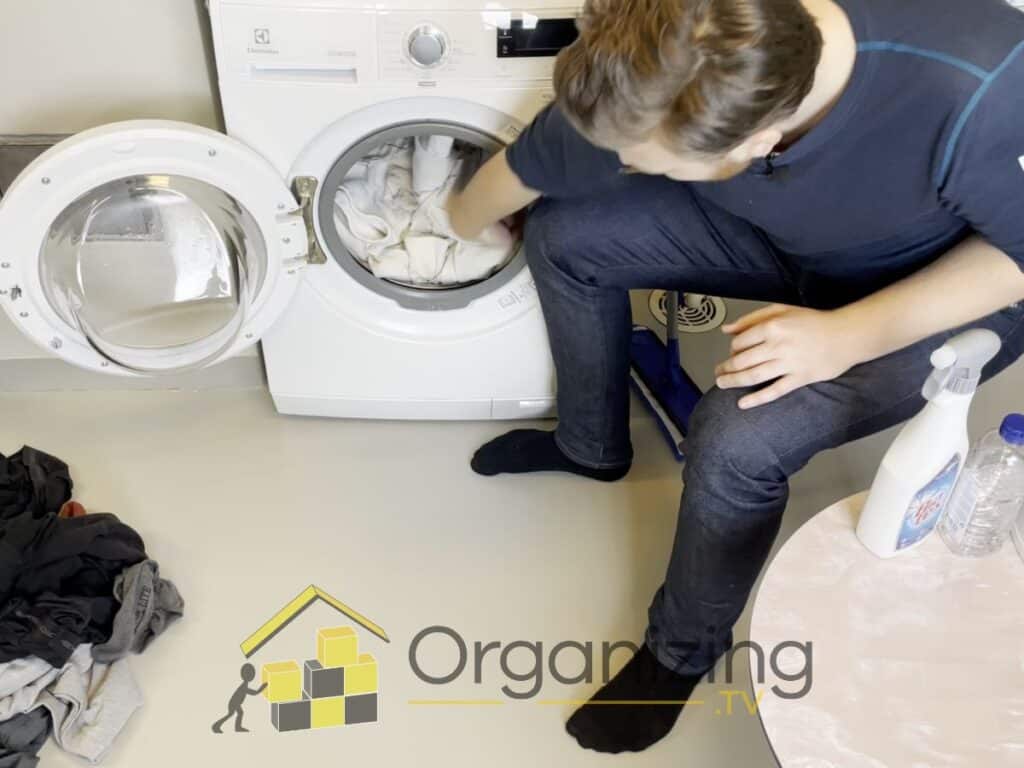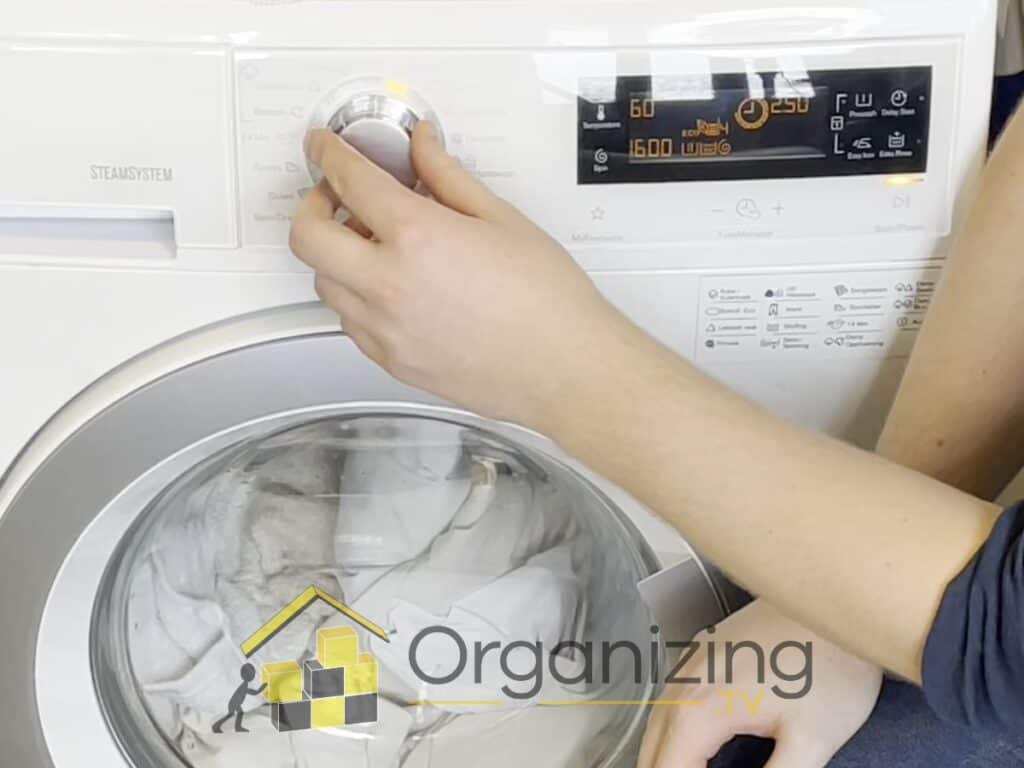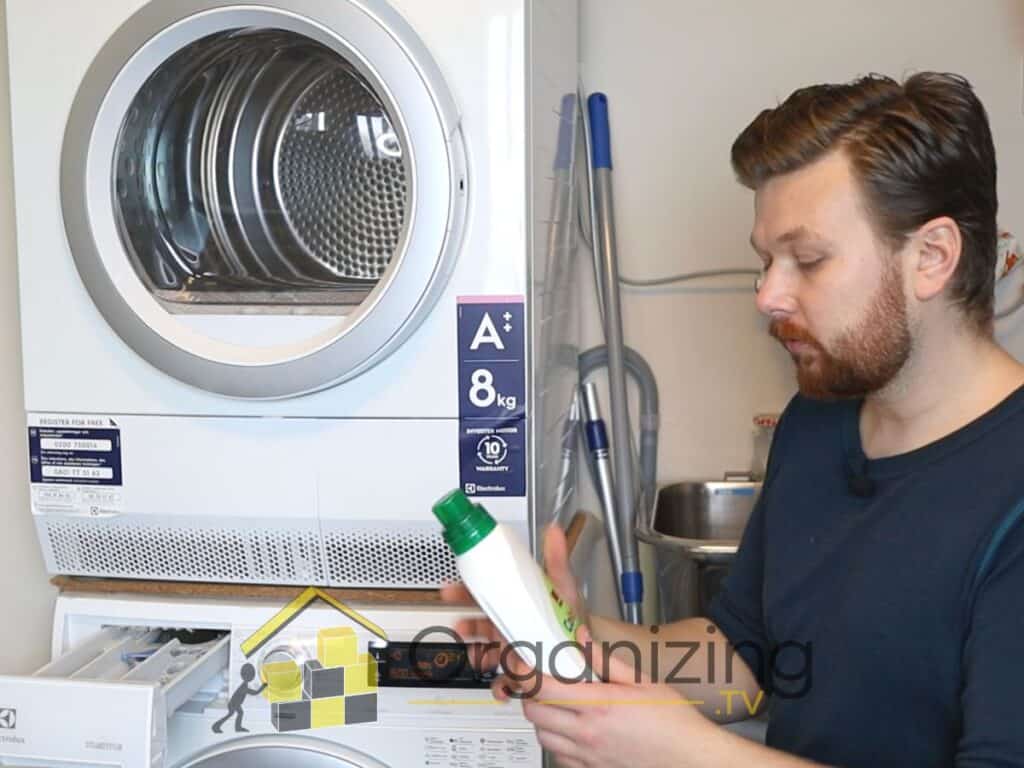If your white clothes keep getting gray or dull over time, chances are you’re washing them wrong. While washing white clothes correctly isn’t complicated, it can have a huge impact on how long white fabrics stay looking new.
To wash white clothes in the washer, start by separating them from colored clothes. Before washing, pretreat any visible stains. Check their fabric type and care label to choose the right water temperature and wash cycle. Use the “whites” setting when you want to bleach clothes.
This article provides a step-by-step guide to washing white clothes in the washer. I’ll also give you some dos and don’ts for keeping your white garments bright and spotless.
A Step-by-Step Guide To Machine Washing White Clothes
Washing machines make doing laundry a lot easier. However, with all the settings washing machines offer these days, some people may find washing white clothes a bit tricky.
Before starting with the process, it’s important to set expectations right. White clothes will naturally lose their brightness over time, no matter how carefully you wash them. However, following these steps will put off that deterioration for as long as possible.
Here are the steps you should follow to wash your white clothes in the washer.
1. Separate White From Colored Clothes

Sorting your laundry before you start washing is the first and most important step in taking care of your white clothes. This is what prevents color bleeding from happening.
Color bleeding occurs when the dye from the garment is drawn out of its fiber once it gets wet. As the washing machine washes the clothes, the dye from colored clothes gets transferred to other clothing, much to the detriment of your white clothes.
Separating the white from the colored ones prevents them from getting any discoloration. Doing this will keep your clothes in their whitest and brightest state!
2. Check the Fabric and the Garment Care Labels

When washing clothes, it is essential to know that different types of fabric require different washing machine settings.
Of course, not everyone is a clothing fabric expert, and that’s why care labels exist. They’re an accessible and convenient reference for caring for different clothing. On the fabric care tags, you’ll find symbols that indicate the following:
- Washing method
- Water temperature
- Washing machine cycle
- Drying temperature
- Tumble dry cycle
- Bleaching tolerance
- Iron setting
3. Pretreat the Clothes To Remove Stains

Sadly, white clothes are very vulnerable to stains. Stain a blank sheet of white paper, and the stain will be the first thing someone notices—not the empty space. The same applies to white clothes.
A bad stain can entirely ruin a white garment, and that’s why the pretreatment of white clothes is so important.
You can pretreat white clothes stains using commercial products or homemade solutions. Some commercial products you can use are:
- Stain remover detergents
- Bleach
- Borax
On the other hand, you may find homemade solutions more effective. Here are some household items you can use:
- Vinegar
- Hydrogen peroxide with baking soda
- Lemon juice
- Toothpaste
- Aspirin
Check out this article for a detailed guide on how to pretreat stains on white clothes.
4. Put the Clothes in the Washer

Once you have pretreated your white clothes to remove stains, you can start putting them in the washing machine. Make sure not to overload the washer because doing so will leave no space between the clothes.
If there’s not enough space, the dirt and sweat in your clothes will not be flushed properly and will only reinsert themselves between the clothing’s fibers. This will give your white clothes a dull appearance.
5. Set the Water Temperature

It’s often recommended to use hot water is that it can remove grease and sweat stains more effectively. However, the water temperature you should set depends on the sensitivity of the fabric. These are some materials that can withstand warm to hot water temperatures:
- Cotton
- Linen
- Nylon
- Polyester
Some fabrics can be damaged by high temperatures. Only use cold water when washing fabrics such as:
- Acrylics
- Rayon
- Acetate
When unsure about the fabric type of your white clothes, check the garment care label. It may have a number on top of one of the wash symbols, indicating the water temperature it can tolerate without damage.
There are a few extra considerations about temperature you should keep in mind. During winter, especially if you live in a cold area, the cold water setting on your washing machine may be too cold for detergents to work properly. In that case, set the water temperature to warm.
6. Select the Cycle Type

Like water temperature, choosing the right washing cycle depends on the fabric. Wash cycles determine the degree of agitation and the time spent in the wash.
Too much spinning around may cause delicate fabrics to loosen up or tear apart. Here are some of the wash cycles you should know and how they differ from each other:
- Delicate. This setting is ideal for fragile clothes like thin cotton shirts. This setting has lower agitation and slower spins that prevent thin garments from ripping.
- Rapid wash or Speed wash. This washer option is ideal for last-minute laundry because it has short wash cycles and quick spins. However, make sure that your garment is strong enough to withstand the strong spinning, or else you will end up damaging it.
- Normal. This option agitates and spins your clothes at a moderate speed. This removes most soil in clothes and doesn’t take too long.
- Heavy duty. This cycle is good for heavily soiled work clothes or thick coats. It spins clothes longer than the average to disintegrate stubborn dirt.
- Whites. This setting takes longer than usual to spend more time removing stains. This cycle also uses hotter water, which is suitable for certain fabrics.
There are other cycle types, like the permanent press. However, this setting is best suited for dark and colored clothes. There is also the bulky cycle, which is utilized for bulky items like bedding and is not typically used on clothes.
7. Use the Right Detergent

Another factor in washing white clothes is using the right detergent. There are two kinds of detergent used for washing clothes: light-duty or “mild” detergents and heavy-duty detergents.
One of the main differences between the two is their alkaline content. Mild detergent is lightly alkaline, while heavy-duty detergent is moderately alkaline. The higher the alkaline concentration, the stronger the detergent is. Mild detergents are enough for lightly soiled clothes, while thicker dirt needs heavy-duty detergents.
Aside from that, there are some washing machines that work best with a specific type of detergent. An example of this is high-efficiency (HE) washers, which cut down energy and water consumption by up to 80% when high-energy laundry detergents are used. If you have this kind of washing machine, you should check my article on the ten best laundry detergents for HE washers.
Lastly, you might also consider detergents with optical brighteners known as fluorescent whitening agents. This substance significantly brightens white clothes by converting ultraviolet (UV) light waves to increase blue light and reduce the amount of yellow light, making them look whiter.
However, take this option with a grain of salt, as detergents with optical brighteners are not biodegradable. Their small molecules, when washed away, accumulate in our water bodies and pose hazards to the environment. Pretreatment of stains can save you from resorting to this type of detergent.
Some detergents ask for using larger amounts when washing with hard water, so take that into account. If there are stubborn mineral residues in your bathroom, chances are you live in an area with hard water.
If you have hard water, make sure not to use chlorine bleach. It can yellow your clothes when it comes in contact with iron, one of the most common minerals in hard water. Use oxygen bleach instead.
8. Wash Again if Stains Are Still Visible
Repeat the washing process if you still see stains on your garments even after washing them. If you don’t do this and then proceed to dry them, the stain will become permanent.
However, you shouldn’t resort to back-to-back washing too often. Washing wears down your clothes slightly every time you do it, so only wash your clothes twice when needed.
9. Air Dry Your Clothes in the Sun
After the whole washing process, it is finally time to dry your white clothes. The best method to dry white clothes is to put them outside under the sun, especially when the climate is sunny, dry, and windy.
The UV rays of the sun bleach and disinfect white clothes, not to mention that drying clothes under the sun is cheap and eco-friendly.
If the weather does not permit outdoor drying, you can use a dryer with a lower heat setting to finish the job.
Some fabrics will stand tumble drying better than others. You should definitely not tumble dry delicates.
Should You Use the Whites Setting on the Washing Machine?
Generally speaking, you should use the “whites” setting on washing machines. The whites cycle is usually long and strong, much like the heavy duty cycle. This allows it to remove stains more effectively.
This setting can also release bleach at the right time during the cycle in order to whiten fabrics. You shouldn’t use bleach every time you wash white clothes, but if you’re trying to get rid of a stubborn stain, this is a handy feature.
However, for these same reasons, you should be careful about which clothes you put on a whites cycle, as it might damage sensitive fabrics. When choosing a cycle, always consider the type of fabric first.
Do’s and Don’ts for Machine Washing White Clothes
To add more tips about machine washing white clothes, here are some do’s and don’ts to keep your garments spotless.
Do’s
- Put delicates in washing bags. Sensitive fabrics can be damaged when rubbed against other clothing or get entangled between thicker garments. Putting these garments inside laundry bags will protect their quality.
- Keep the washing machine door open after usage. Let the washer’s inside air dry to prevent the growth of mold and mildew after using it. You don’t want mold to get into your white clothes!
- Clean your washing machine regularly. The washer cannot wash your white clothes properly if it’s dirty.
- Wash white clothes after each wearing and as soon as they get visibly soiled. Garments that come in close contact with your skin, such as racerbacks and t-shirts, should be washed right away to prevent sweat buildup. This will stop dirt from leaving a permanent stain.
Don’ts
- Don’t leave the pockets unchecked. Always check your clothes’ pockets for any items like tissues or sharp objects. Tissues will leave white fluff all over your clothes, while sharp objects may damage other garments.
- Don’t apply fabric conditioner directly on the clothes. Fabric conditioners leave stains upon direct contact with white clothes. Instead, look for the correct compartment marked for detergent and other liquids.
- Do not use too much detergent. Putting more detergent than what is needed does not make your clothes cleaner. It will only leave residue on the clothes and the washing machine if not dissolved in the water properly.
- Do not leave the clothes wet inside the washer for a long time. Again, mold and mildew love damp places.
- Don’t store your white clothes in plastic containers. Plastic contributes to white clothes turning yellow. So does storing them in humid, enclosed bags or boxes. Instead, opt for breathable cotton bags or bins.
- Don’t store dirty white clothes. This gives stains more time to set in, making them harder to remove. Make sure you wash your white clothes often.
Final Thoughts
The most important step in washing white clothes is separating them from dark clothes. This will prevent color bleeding.
Stains stand out more on white clothes, which is why you should always pretreat stains before loading them into the washing machine. To preserve white clothing, consider the fabric type and caring requirements, just like with any other type of clothing.
Washing machines now offer features like easily configurable water temperatures and wash cycles. This makes machine washing white clothes even more convenient.
I’ve also created a comprehensive guide on how to use all the settings on your washing machine that may interest you to read next.


I’m an expert wardrobe organizer and a bit of a clean freak. I created this website and its YouTube channel to share practical guides about laundry and organizing. My teachings have been featured in multiple large news publications, and I’ve self-published two wardrobe organizing books and an entire course on the subject.


